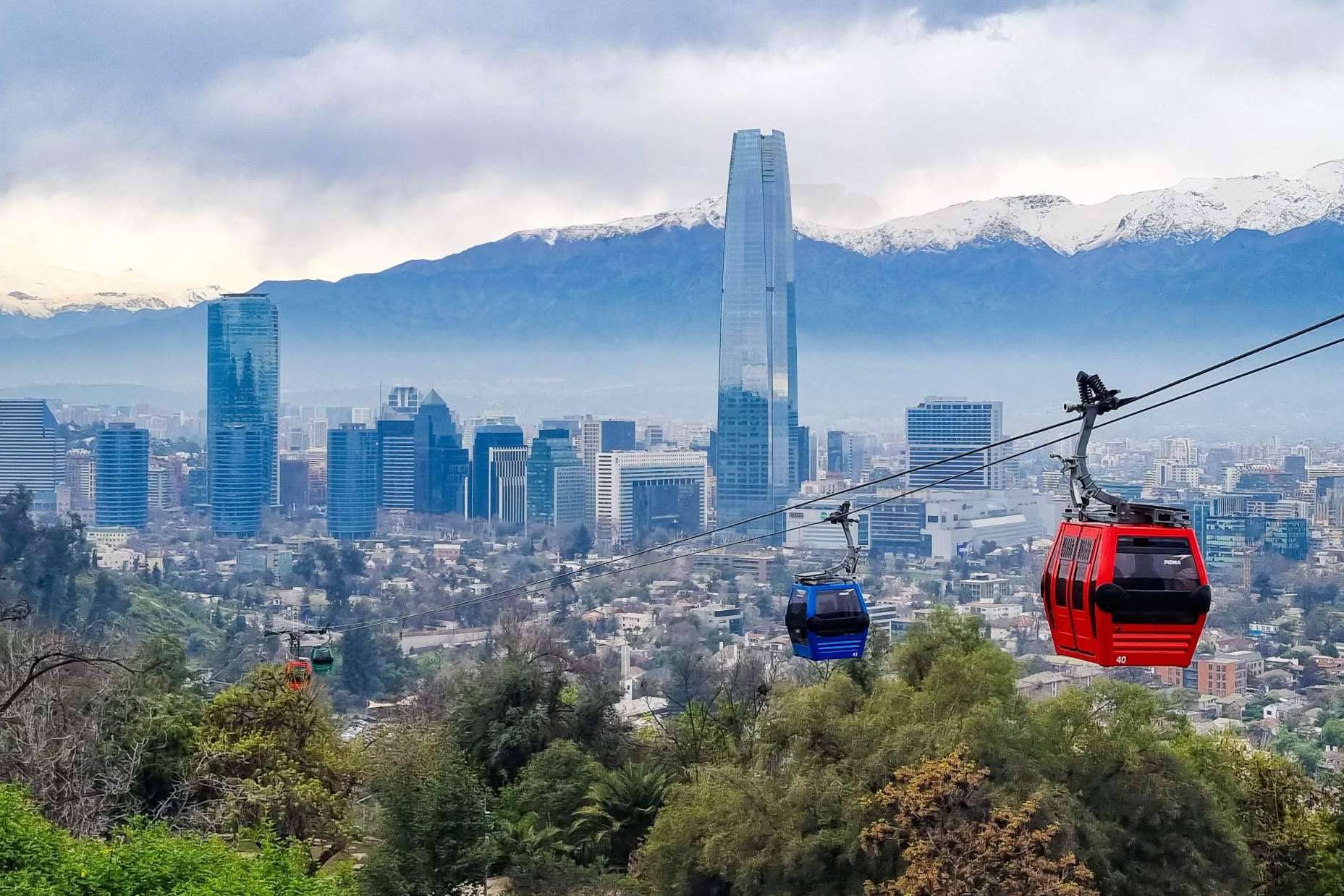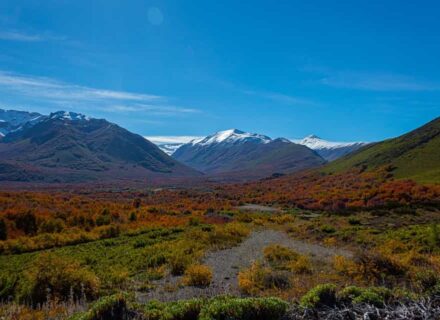Chile, a country stretching along the western edge of South America, is renowned for its remarkable geographic diversity. From towering mountains and vast deserts to lush forests and sprawling coastlines, Chile is home to a range of landscapes that are both breathtaking and unique. Along with its natural wonders, the country also boasts a rich history, reflected in its many iconic landmarks. This article takes a deep dive into some of the most famous landmarks in Chile, exploring the cultural and natural significance behind each one.
1. Easter Island (Rapa Nui)
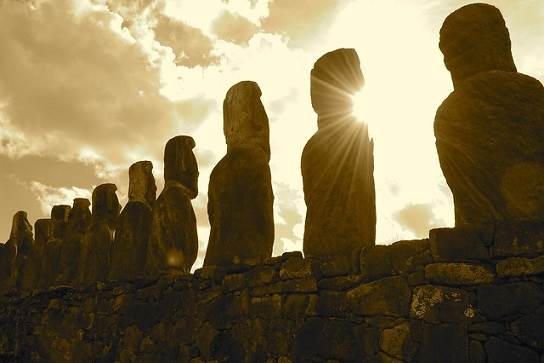
One of the most isolated places on Earth, Easter Island (Rapa Nui) is an extraordinary island in the Pacific Ocean. It is famed for its enigmatic moai statues—giant stone figures carved between 1400 and 1650 CE by the island’s indigenous Rapa Nui people. These statues, made of volcanic tuff, stand as a testament to the ancient culture of Easter Island, many of them reaching heights of over 30 feet and weighing several tons.
Easter Island itself is a UNESCO World Heritage Site, known not only for its archaeological significance but also for its stunning landscapes. The island is home to volcanic craters, lush vegetation, and an abundance of birdlife. Visitors can explore the ancient ceremonial sites of Ahu Tongariki, Ahu Akivi, and Orongo, each offering insights into the island’s history and the fascinating civilization that once thrived there. The isolation of Easter Island adds to its mystique, making it one of the most intriguing landmarks in Chile.
2. Torres del Paine National Park
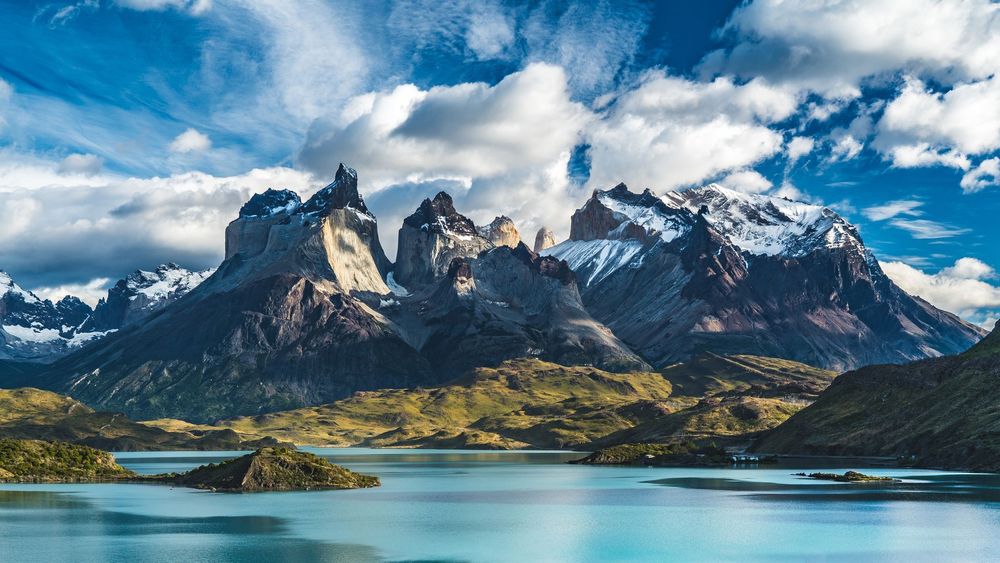
Located in the southern Patagonian region, Torres del Paine National Park is one of Chile’s most celebrated natural wonders. The park is famous for its dramatic landscapes, which include towering granite peaks, glaciers, turquoise lakes, and vast pampas. The park’s centerpiece is the iconic Torres del Paine (Towers of Paine), a trio of jagged granite spires that rise over 2,800 meters above sea level.
Torres del Paine is a paradise for hikers, offering a range of trails that allow visitors to explore the park’s diverse ecosystems. Popular hikes include the W Trek and the O Circuit, both of which offer spectacular views of the park’s stunning peaks, valleys, and lakes. Wildlife enthusiasts can also spot native species such as guanacos, Andean condors, and pumas. With its awe-inspiring natural beauty, Torres del Paine is considered one of the most beautiful national parks in the world.
3. Valparaiso
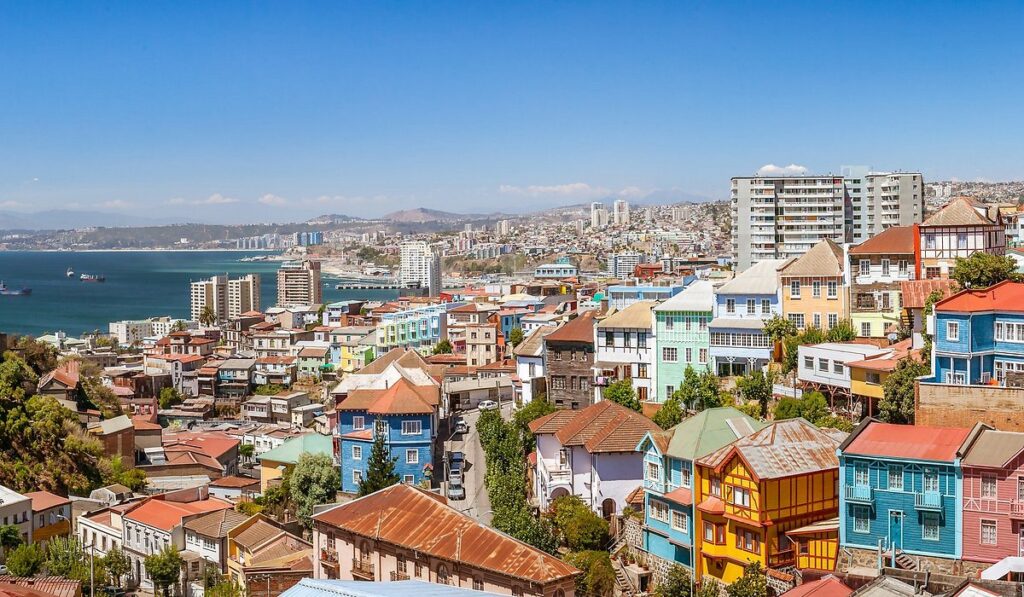
Valparaiso, a vibrant port city on Chile’s central coast, is known for its colorful hills, historic architecture, and bohemian culture. Founded in the 16th century, Valparaiso played a pivotal role in the maritime trade routes during the 19th century. The city’s strategic location along the Pacific Ocean made it a key port for ships traveling between the Atlantic and Pacific Oceans, particularly before the construction of the Panama Canal.
Today, Valparaiso is a UNESCO World Heritage Site, recognized for its eclectic mix of colonial-era buildings, winding streets, and steep hillsides. The city’s most famous feature is its funicular elevators, which transport residents and visitors up and down the steep hills. The vibrant street art and murals that adorn the city’s buildings are another hallmark of Valparaiso, adding a layer of creativity and modern culture to its historical backdrop. A walk through the Cerro Alegre and Cerro Concepción neighborhoods offers a glimpse into the artistic soul of Valparaiso, making it a must-visit landmark for travelers.
4. Atacama Desert
Chile is home to one of the driest places on Earth—the Atacama Desert. Stretching along the northern part of the country, this arid landscape is often compared to the surface of Mars due to its unique terrain and extreme dryness. The Atacama Desert is dotted with salt flats, sand dunes, and dramatic rock formations, all of which create an otherworldly atmosphere.
Among the desert’s many landmarks are the Valle de la Luna (Valley of the Moon), with its surreal lunar-like landscape, and the Salar de Atacama, one of the largest salt flats in the world. The Atacama is also home to the El Tatio Geysers, a geothermal field with more than 80 active geysers that shoot steam into the air at sunrise. The desert is also known for its clear skies, making it a prime location for stargazing and astrophotography.
Despite its harsh conditions, the Atacama Desert is teeming with life. Visitors can spot flamingos at the Laguna Chaxa and explore ancient archaeological sites, including the pre-Columbian ruins of Pukara de Quitor and the petroglyphs at Yerbas Buenas. The Atacama Desert is a fascinating and surreal landmark in Chile that offers a glimpse into the resilience of life in extreme conditions.
5. The Andes Mountains
Stretching the length of Chile from north to south, the Andes Mountains are perhaps the most iconic natural landmark in the country. These towering peaks form the backbone of Chile’s landscape, with some of the highest mountains in the Western Hemisphere, including Mount Ojos del Salado (the highest active volcano in the world) and Mount Aconcagua, which, though located in Argentina, is part of the Andes range.
The Andes are not only a symbol of Chile’s geographical identity but also offer a wealth of outdoor activities. Skiing and snowboarding are popular in the winter months, with resorts such as Valle Nevado and La Parva attracting skiers from around the world. The mountains are also a haven for trekkers and climbers, offering challenging expeditions and breathtaking views. Whether viewed from the capital city of Santiago or explored up close, the Andes are a vital part of Chile’s natural heritage.
6. Pucón and Villarrica Volcano
In the central part of Chile lies the charming town of Pucón, known for its stunning surroundings and proximity to the Villarrica Volcano. Villarrica is one of Chile’s most active volcanoes and a prominent feature of the southern Andes. The town of Pucón is a popular base for adventurers looking to hike the volcano or engage in water sports on Lake Villarrica.
The Villarrica Volcano is a stratovolcano with a nearly symmetrical cone and a crater that occasionally emits smoke. Adventurers can climb to the summit of the volcano, where they are rewarded with spectacular views of the surrounding lakes and forests. Pucón itself is a bustling tourist town, offering a range of outdoor activities such as white-water rafting, zip-lining, and hiking. Its proximity to the volcano and surrounding natural beauty make it one of the top landmarks in southern Chile.
7. La Moneda Palace
In the heart of Santiago, the capital of Chile, stands La Moneda Palace, an iconic symbol of Chilean politics and history. Built in the late 18th century, La Moneda originally served as the presidential palace and is now the seat of the Chilean government. The palace is located in the Plaza de la Constitución, and its neoclassical architecture is a prominent feature of Santiago’s skyline.
La Moneda Palace holds great historical significance. It was here that President Salvador Allende was overthrown in the 1973 military coup, an event that marked a dark chapter in Chile’s history. Today, visitors can tour the palace and learn about the country’s political history, including exhibitions on the military dictatorship, the return to democracy, and Chile’s modern political landscape. La Moneda is not only an important cultural landmark but also a symbol of the resilience and transformation of Chile.
8. Chiloé Island
Chiloé Island, located off the southern coast of Chile, is one of the country’s most unique cultural landmarks. Known for its lush forests, dramatic coastlines, and distinctive architecture, Chiloé offers visitors a glimpse into a different side of Chilean life. The island is home to the famous wooden churches of Chiloé, many of which have been designated as UNESCO World Heritage Sites. These churches, built between the 17th and 19th centuries, are architectural gems that reflect the island’s colonial history and the fusion of indigenous and European influences.
Chiloé is also known for its folklore and legends, many of which involve mythical creatures such as the Caleuche (a ghost ship) and the Trauco (a spirit that causes people to fall in love). Visitors can explore the island’s charming towns, such as Castro and Ancud, and enjoy traditional Chiloé cuisine, which includes dishes like curanto (a seafood and meat stew) and milcao (potato-based pancakes). Chiloé is a place where nature, history, and culture intertwine, making it one of Chile’s most beloved landmarks.
Conclusion
Chile is a country rich in natural beauty and cultural heritage, and its landmarks reflect the diversity and depth of its landscape and history. From the mystical moai statues of Easter Island to the snow-capped peaks of the Andes, each of Chile’s famous landmarks offers a unique glimpse into the country’s story. Whether you’re drawn to the natural wonders of Torres del Paine and the Atacama Desert or the vibrant urban life of Valparaiso and Santiago, Chile’s landmarks provide a wealth of experiences for travelers seeking adventure, history, and culture.
